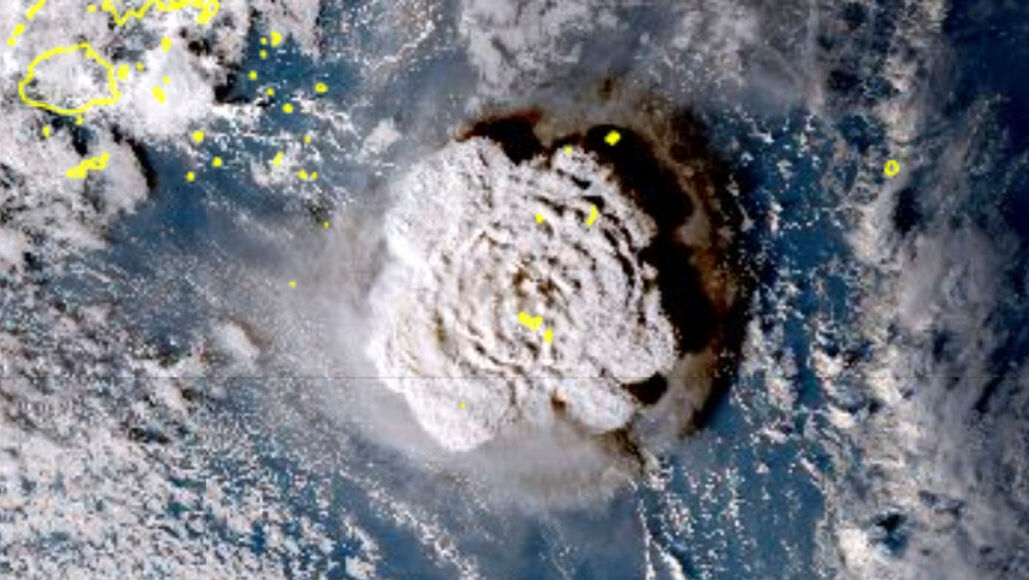By: Emma Xing
It is December, 20, 2021. The ground is vibrating. An underwater volcano suddenly erupts. A tsunami comes at the size of the Statue of Liberty. And, bam! Lighting strikes!
This underwater volcano in the South Pacific island nation of Tonga made history with lighting. According to scientists, it struck with the highest altitudes ever seen. And the water and ash the eruption spurted could reach space! That’s 62 miles above sea level!
Lightning is usually formed inside storm clouds. However that’s not the only way lightning is formed. Another way happens when a volcano erupts, the plume is made of tiny bits of ash, gas and dust. And when those particles bump into each other, it creates static electricity which then turns into a lightning that zips through the plume. So that was how the volcano formed the lightning.
Learning this, the scientists wanted to dive deeper into the Tonga explosion. So Alexa Van Eaton led a team of scientists to see exactly how high the Tonga explosion did reach.
The team estimated how high the lightning’s height was. To do this, Van Eaton’s team looked at a few different types of data, including radio waves made by the lighting and satellite images of the eruption plume and infrared light from the flashes.
This led to an answer of 20 kilometers above sea level! They learned that the lightning doesn’t usually appear that high so it would be predicted the lighting would reach higher than normal.
Van Eaton concluded that the plume increased the air pressure above the volcano which then caused the lightning to reach strangely high altitudes.
One way or another, the Tonga eruptions made scientists think the eruption has completely changed the way we think of how natural events can change the atmosphere and the environment where we thought lightning could exist.











